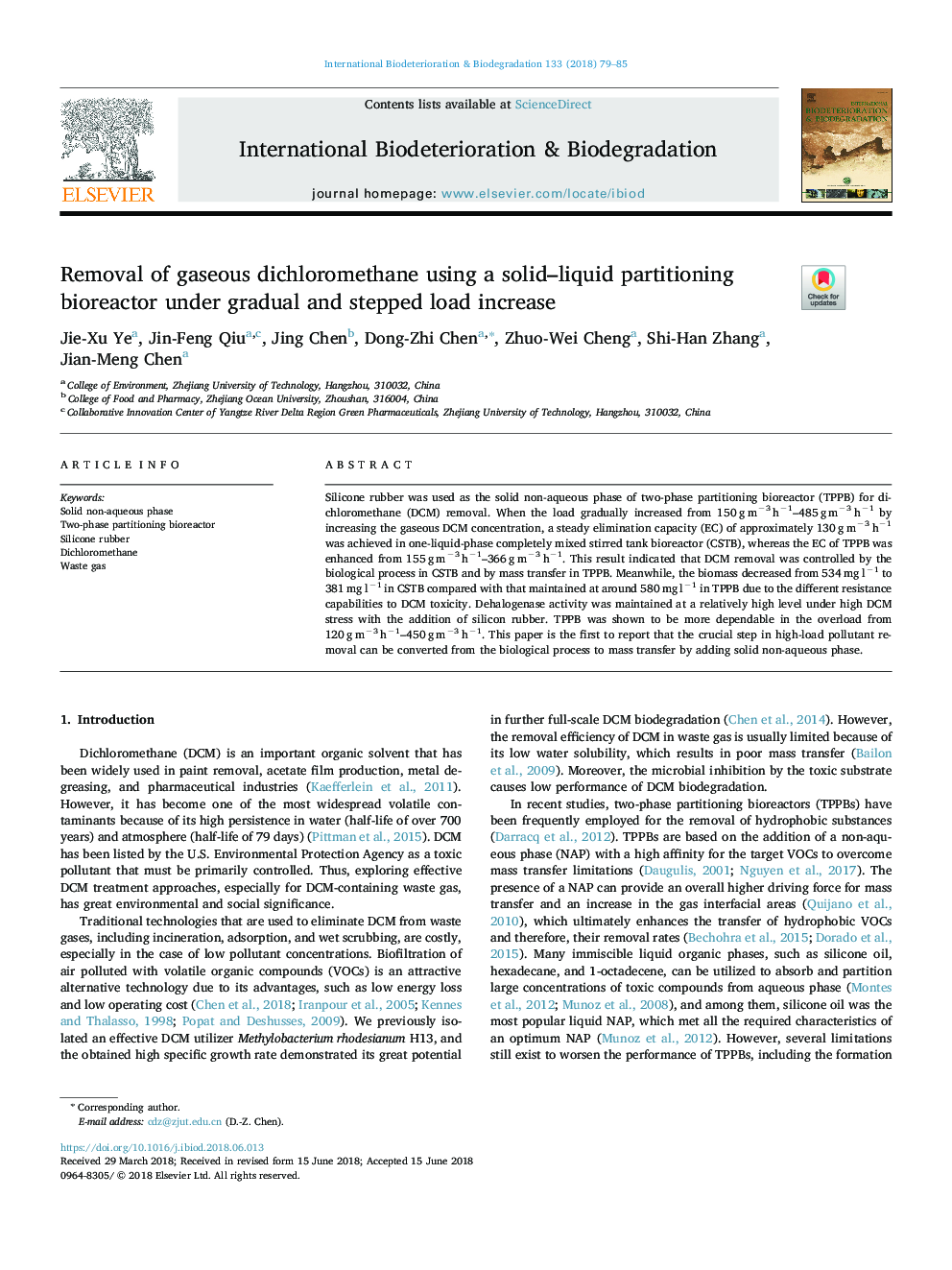| Article ID | Journal | Published Year | Pages | File Type |
|---|---|---|---|---|
| 8843684 | International Biodeterioration & Biodegradation | 2018 | 7 Pages |
Abstract
Silicone rubber was used as the solid non-aqueous phase of two-phase partitioning bioreactor (TPPB) for dichloromethane (DCM) removal. When the load gradually increased from 150â¯gâ¯mâ3â¯hâ1-485â¯gâ¯mâ3â¯hâ1 by increasing the gaseous DCM concentration, a steady elimination capacity (EC) of approximately 130â¯gâ¯mâ3â¯hâ1 was achieved in one-liquid-phase completely mixed stirred tank bioreactor (CSTB), whereas the EC of TPPB was enhanced from 155â¯gâ¯mâ3â¯hâ1-366â¯gâ¯mâ3â¯hâ1. This result indicated that DCM removal was controlled by the biological process in CSTB and by mass transfer in TPPB. Meanwhile, the biomass decreased from 534â¯mgâ¯lâ1 to 381â¯mgâ¯lâ1 in CSTB compared with that maintained at around 580â¯mgâ¯lâ1 in TPPB due to the different resistance capabilities to DCM toxicity. Dehalogenase activity was maintained at a relatively high level under high DCM stress with the addition of silicon rubber. TPPB was shown to be more dependable in the overload from 120â¯gâ¯mâ3â¯hâ1-450â¯gâ¯mâ3â¯hâ1. This paper is the first to report that the crucial step in high-load pollutant removal can be converted from the biological process to mass transfer by adding solid non-aqueous phase.
Related Topics
Life Sciences
Environmental Science
Environmental Science (General)
Authors
Jie-Xu Ye, Jin-Feng Qiu, Jing Chen, Dong-Zhi Chen, Zhuo-Wei Cheng, Shi-Han Zhang, Jian-Meng Chen,
